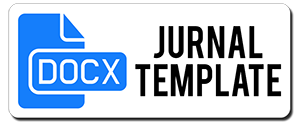PEMETAAN INDEKS BAHAYA DAN KERENTANAN BENCANA LETUSAN GUNUNGAPI DI KABUPATEN BLITAR (STUDI KASUS KECAMATAN GANDUSARI)
DOI:
https://doi.org/10.33172/jmb.v7i2.757Abstract
Mount Kelud is a strato-volcanic type with explosive characteristics of a large explosion. Until now, Mount Kelud is classified as active with an eruption period of about 5-25 years. Historically, the highest eruption of Mount Kelud occurred in 1990 which reached 5 on the VEI scale and submerged Gandusari District with pyroclastic material. Gandusari sub-district is located 0-7 km from the crater, making this sub-district has a high hazard index against volcanic eruptions. This study aims to map the hazard and vulnerability index of the eruption of Mount Kelud in Gandusari District as one of the mitigation efforts. The hazard index mapping was carried out by digitizing the Kelud Volcanic Eruption Hazard Area (KRB) map published by PVMBG, while the vulnerability index was calculated using spatial data from the Blitar Regency Public Works and Public Housing (PUPR) and non-spatial data from the Central Statistics Agency. (BPS) Blitar Regency. The mapping results show that areas with a high hazard index are located in the Kelurahan Gandusari, Ngaringan, Soso, Tulungrejo, and Krisik. Meanwhile, areas with a high vulnerability index are located in Ngaringan, Sokosewu, Butun, Sumbung, and Semen Villages.References
Badan Nasional Penanggulangan Bencana. (2012). Peraturan Kepala Badan Penanggulangan Bencana No. 95 Tahun 2012 Tentang Pedoman Umum Pengkajian Risiko Bencana.
Cutter, S. L. (1996). Vulnerability to environmental hazards. Progress in human geography, 20(4), 529-539.
Dewi, A. (2007). Community-based analysis of coping with urban flooding: a case study in Semarang, Indonesia. ITC.
Hardjono, I. (2015). Vulkanologi dan Mineralogi Petrografi. Muhammadiyah University Press.
Kementerian Energi dan Sumber Daya Mineral Republik Indonesia. (2011). Peraturan Menteri Energi dan Sumber Daya Mineral No.15 Tahun 2011 Tentang Pedoman Mitigasi Bencana Gunungapi, Gerakan Tanah, Gempabumi dan Tsunami.
Martha, G. K. W. (2014). Pemetaan Daerah Rawan Jatuhan Material Piroklastik: Kasus Erupsi Gunungapi Kelud 2014. Pengelolaan Bencana Kegunungapian Kelud pada Periode Krisis Erupsi 2014, 1(2).
Pusat Vulkanologi dan Mitigasi Bencana Geologi. (2011). Data Dasar Gunungapi Marapi. Retrieved from https://vsi.esdm.go.id/index.php/gunungapi/data-dasar-gunungapi/495-g-marapi?start=6 , diakses tanggal 8 April 2021.
Pusat Vulkanologi dan Mitigasi Bencana Geologi. (2014). Data Dasar Gunungapi Kelud. Retrieved from https://vsi.esdm.go.id/index.php/gunungapi/data-dasar-gunungapi/538-g-kelud?start=7, diakses tanggal 8 April 2021.
Rahayu, I., & Priyono, K. D. (2020). Analisis Spasial Kapasitas Masyarakat Kecamatan Gandusari Kabupaten Blitar Dalam Menghadapi Bencana Erupsi Gunungapi Kelud Melalui Program Destana. Doctoral dissertation. Universitas Muhammadiyah Surakarta).
Restu, W. N., Fauzia, P. D., & Suwito, S. (2016). Tanggap Darurat Bencana Erupsi Gunungapi Kelud Tahun 2014 di Kota Batu. JPIG (Jurnal Pendidikan dan Ilmu Geografi), 1(1), 62-69.
Subaktian. (2016). Bentuk Geomorfologi Dasar Laut pada Tepian Aktif di Lepas Pantai Barat Sumatera dan Selatan Jawa Indonesia. Jurnal Puslitbang Geologi Kelautan (PPPGL).
Syiko, S. F., Rachmawati, T. A., & Rachmansyah, A. (2014). Analisis Resiko Bencana Sebelum dan Setelah Letusan Gunung Kelud Tahun 2014 (Studi kasus di Kecamatan Ngantang, Malang). Indonesian Journal of Environment and Sustainable Development, 5(2).






